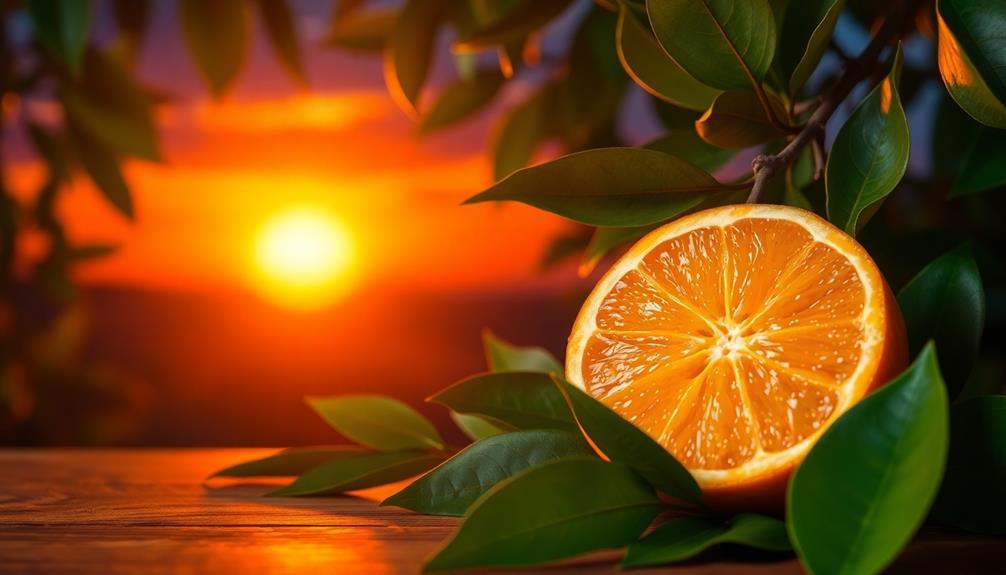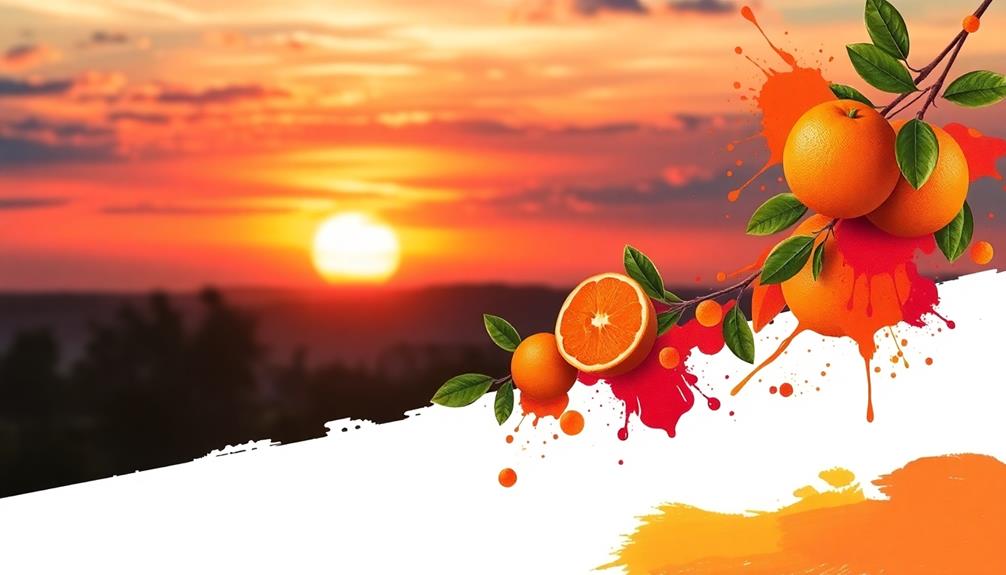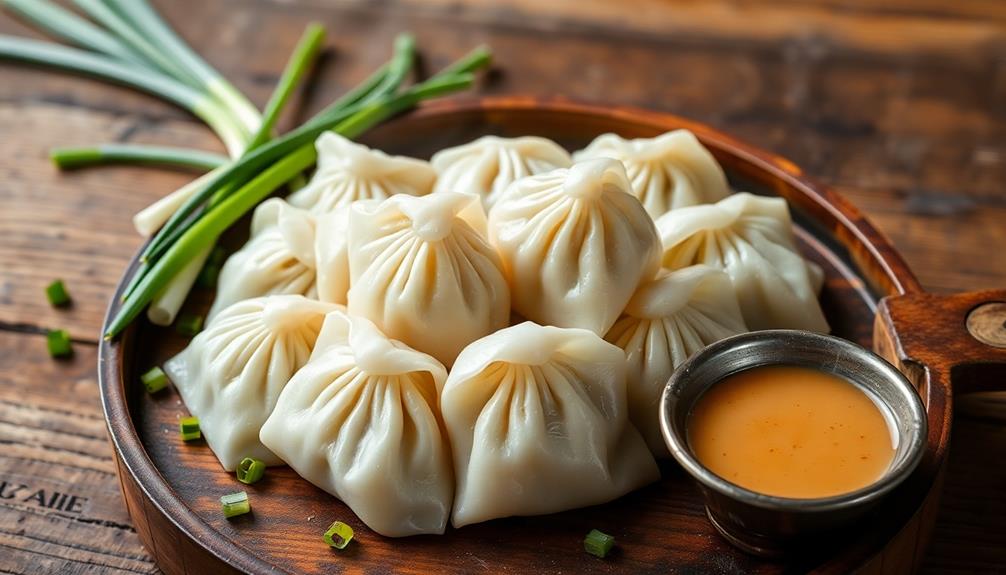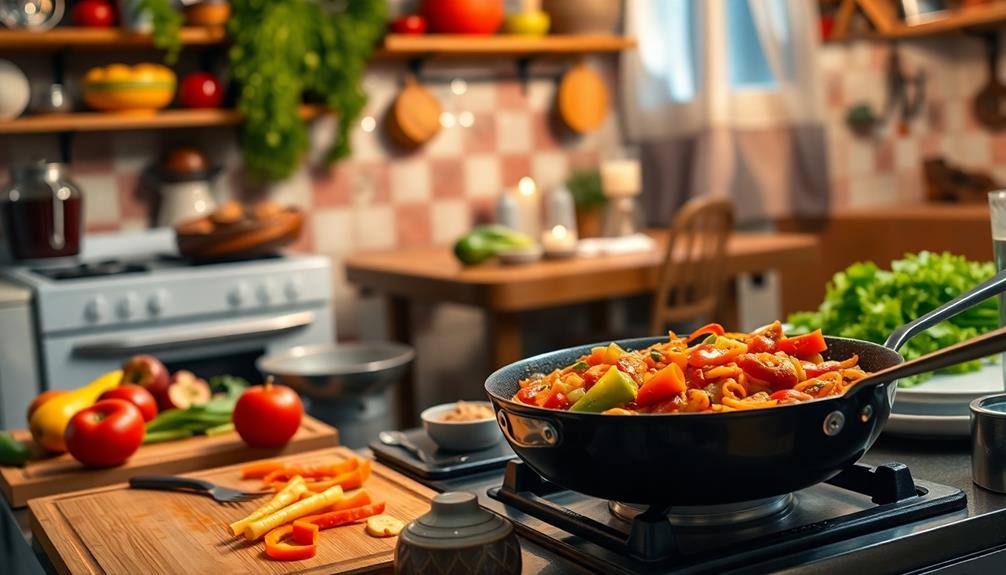Orange is a vibrant secondary color created by mixing red and yellow. You'll find it nestled between these two colors in the visible light spectrum. When it comes to light, orange is produced by combining high-intensity red with light green in the RGB color model. Historically, it holds significant meaning across cultures—from the warmth in autumn leaves to its use in art and royal symbolism. Psychologically, orange is known to evoke excitement and stimulate appetite. Their connection goes deep, revealing layers of cultural importance. Discover more intriguing facts about this dynamic color and its impact.
Key Takeaways
- Orange is a secondary color formed by mixing red and yellow light in color theory.
- In the RGB color model, orange is created by combining high-intensity red with lower-intensity green.
- The color orange has a wavelength range of 585-620 nm in the visible light spectrum.
- In the HSV color space, orange is measured at 30°, highlighting its distinct representation.
- Orange pigments like realgar and orpiment were historically used in ancient art and illuminated manuscripts.
Characteristics of Orange

When you explore the characteristics of orange, you find it sitting between yellow and red in the visible light spectrum, with wavelengths ranging from 585 to 620 nanometers. This placement highlights orange as a vibrant and energetic color, often associated with warmth and enthusiasm.
In traditional color theory, orange is classified as a secondary color, formed by mixing red and yellow. This blending of hues creates a unique visual experience that captures attention.
In the RGB color model, orange takes on the role of a tertiary color. It's created by combining high-intensity red light with lower-intensity green light while excluding blue light. This method emphasizes how different light combinations can yield distinctive colors.
The hue of orange is measured at 30° in the HSV color space, further identifying its unique position in color representation.
Isaac Newton's work in "Opticks" also plays a significant role in understanding orange. He differentiated pure orange light from mixtures of red and yellow, emphasizing its unique characteristics.
Historical Significance of Orange

Orange's historical significance runs deep, intertwining with cultural, political, and artistic narratives throughout the ages. The term "orange" for the color first appeared in English in the 16th century, as it derives from the fruit introduced to Europe by Portuguese merchants in the late 15th century. This connection laid the groundwork for orange's recorded use in various contexts.
Throughout history, orange has been more than just a vibrant hue; it's been a symbol of power and prestige. Here are some key points to reflect on:
- Ancient Egyptians used orange pigments, like realgar, in tomb paintings, showcasing the color's artistic importance.
- In the Medieval period, orpiment was favored for illuminated manuscripts, adding richness to religious texts.
- Early Christians associated orange with glory, while during the Elizabethan Era, it was a color of nobility, often worn by the elite.
- In political contexts, orange represents strength and courage, evident in royal insignias and flags.
The psychology of the color orange evokes warmth and enthusiasm, further enhancing its historical significance in shaping cultures and societies.
Cultural Associations With Orange

When you think of orange, consider its rich symbolism in various cultures.
In Buddhism, it represents spirituality and is prominently featured in monks' robes, while in the Netherlands, it connects to royal heritage, symbolizing the House of Orange-Nassau.
These cultural ties show how orange holds deep meaning beyond mere aesthetics.
Symbolism in Buddhism
In Buddhism, the color orange holds profound significance, symbolizing the highest state of illumination and spiritual enlightenment. You'll often see monks in Theravada Buddhism wearing orange robes, dyed from readily available materials that reflect simplicity and renunciation. This saffron shade embodies the quest for enlightenment and highlights the importance of meditation.
Here are some key aspects of orange in Buddhism:
- Sacred Color: Orange is regarded as a sacred color, balancing the energetic red with the perfection of yellow.
- Spiritual Growth: It represents the transformation and spiritual growth you undergo on your path to enlightenment.
- Meditation: The color enhances your meditation experience, promoting inner peace and focus.
- Warmth and Joy: Orange signifies warmth and joy, connecting you to the inner light of wisdom.
Incorporating orange into your understanding of Buddhism allows you to appreciate its deeper meanings.
Whether you're drawn to the orange robes of monks or the vibrancy of rituals, this color invites you to explore your own spiritual journey and connection to enlightenment.
Dutch Royal Heritage
The vibrant hue of orange is deeply woven into the fabric of Dutch culture, symbolizing the nation's royal heritage through the House of Orange-Nassau. This royal lineage has greatly influenced Dutch history, particularly during the struggle for independence and the establishment of the Dutch state.
As the national color, orange embodies national pride and unity among the Dutch people. You'll notice orange takes center stage during national celebrations like King's Day. On this festive day, citizens don orange clothing and accessories, showcasing their connection to the monarchy and celebrating their heritage.
The color also appears in various symbols, flags, and promotional materials that represent Dutch identity. Beyond festivities, orange is a beacon of unity, especially during sporting events. When the Dutch national soccer team competes, you'll see fans donning orange to rally behind their team, reinforcing their collective spirit.
This cultural association with the color goes beyond mere aesthetics; it's about pride, freedom, and a shared history. Embracing orange allows you to participate in a rich tradition that unites the Dutch people in their love for their country and its royal legacy.
Orange in Nature and Food

Orange is a striking color that fascinates the eye and signifies energy, especially in nature and food. You'll often notice this vibrant hue reflected in various aspects of the world around you. One of the most remarkable displays of orange occurs during autumn, as leaves transform into brilliant shades due to the breakdown of chlorophyll.
Additionally, many orange foods, such as carrots and pumpkins, are known for their health benefits due to their high content of vitamins and antioxidants.
In the domain of food, orange foods not only brighten your plate but also pack a nutritional punch. Here are some highlights:
- Carotenes are the primary pigments giving fruits and vegetables their orange hues.
- Common orange foods include carrots, pumpkins, peaches, and mangoes.
- These foods are rich in vitamins, particularly vitamin C, and antioxidants.
- Dishes like pumpkin pie are quintessential during celebrations, especially Thanksgiving.
As you explore the colorful world of orange in nature and food, you'll discover the beauty and health benefits this vibrant color brings.
Artistic Representation of Orange

Color has always played a pivotal role in artistic expression, and orange stands out as a particularly vibrant choice. Throughout history, artists have used orange in various artistic representations, showcasing its dynamic qualities.
Ancient Egyptians utilized orange pigments like realgar in their tomb paintings, emphasizing its historical significance. The arrival of orange trees in Europe by Portuguese merchants in the late 15th century increased familiarity with the color, leading to its wider use in art.
Impressionist artists, such as Renoir and Van Gogh, recognized the power of orange to create striking contrasts, enhancing the brightness of their works. The discovery of chrome orange in 1809 revolutionized the art world, as it provided synthetic pigments that offered vibrant colors and durability. This allowed artists to explore new dimensions in their palettes.
Today, orange continues to play an essential role in modern design and advertising. Its ability to evoke strong emotional responses and capture attention guarantees it remains a popular choice.
Psychological Effects of Orange

When you think of the color orange, you might feel a rush of excitement and warmth.
This vibrant hue not only influences your emotions but also plays a key role in marketing strategies, grabbing your attention and sparking your appetite.
Understanding these psychological effects can help you see how orange shapes experiences in both personal and commercial spaces.
Emotional Associations With Orange
Vibrant and lively, the hue of orange sparks a range of emotional responses that can considerably influence our mood and behavior. As an energetic color, orange brings enthusiasm and excitement into your surroundings. You might notice how it can invigorate a space, making it perfect for sports branding and uniforms.
Moreover, orange is known to stimulate social interactions, creating a friendly atmosphere that encourages you to engage with others.
Here are some emotional associations you might experience with orange:
- Appetite Stimulation: It can make you feel hungry, often used in food marketing to entice consumption.
- Attention-Grabbing: Bright orange is hard to ignore, making it a powerful tool for attracting your focus.
- Invigorating: The color can elevate your energy levels, though it might complicate your ability to concentrate on tasks.
- Varied Emotional Responses: Different shades evoke diverse feelings; vibrant orange inspires excitement, while softer tones like peach provide warmth and calm.
Understanding these emotional associations can help you harness the power of orange in your life, whether at home or in social settings.
Orange in Marketing Strategies
Harnessing the power of orange in marketing can greatly influence consumer behavior and decision-making. This vibrant orange color is often used in marketing to evoke feelings of enthusiasm and excitement, which effectively captures consumer attention. When people see orange, it prompts higher arousal levels, leading to quicker purchasing decisions.
Research shows that a staggering 85% of consumers make purchasing decisions based on color, underlining the significance of orange in influencing buying behavior. Its visibility makes it a popular choice in advertising, creating an inviting atmosphere that enhances customer engagement.
Whether you're promoting a product or a seasonal sale, the use of orange can drive urgency and excitement, especially during autumn or Halloween promotions.
Incorporating orange into your marketing strategies not only attracts attention but also fosters a connection with your audience. This stimulating color encourages action, making consumers more likely to engage with your brand and ultimately make a purchase.
Safety and Visibility of Orange

The color orange plays an essential role in safety and visibility across various environments. Known as safety orange, this vibrant hue captures attention quickly, making it a standard choice for warning signs and protective gear.
You'll often see orange used in a variety of settings, ensuring that people stay safe and aware. Here are a few key examples:
- Life-saving equipment: Orange rafts and jackets stand out in low light and aquatic environments.
- Highway construction: Orange signs alert drivers to dangers, enhancing visibility on the road.
- Workplace safety: Workers and lifeguards don orange uniforms to increase visibility in crowded spaces.
- Space missions: Astronaut suits are designed in orange for high visibility against blue backgrounds.
Frequently Asked Questions
What Are Some Facts About the Color Orange?
You'll find orange is a blend of red and yellow, vibrant and energetic. It's the color of sunsets, pumpkins, and autumn leaves. This hue evokes warmth and creativity, often sparking joy and enthusiasm in you.
What Makes Orange Color?
To create the color orange, you mix red and yellow in equal parts. Alternatively, in digital settings, you can adjust red and green light intensities while keeping blue off. Experiment with both methods to see variations!
What Gives Oranges Its Color?
Oranges get their vibrant color from carotenoids, especially beta-carotene. As the fruit ripens and chlorophyll breaks down, those pigments become visible, creating the characteristic orange hue you see in fresh oranges.
What Is the Science Behind Orange?
Think of orange as a sunset blending day and night. The science behind it involves mixing red and yellow light wavelengths, creating a vibrant hue that dances between colors on the visible spectrum, enchanting your senses.
Conclusion
In a world bursting with color, orange stands out like a vibrant sunset, igniting feelings of warmth and creativity. Its rich history and cultural significance wrap around us like a cozy blanket, while its presence in nature and food tantalizes our senses. Embracing the psychological boost of orange can brighten your day, making every moment feel a bit more alive. So, whether you're painting a masterpiece or enjoying a juicy orange, let this lively hue inspire you.










